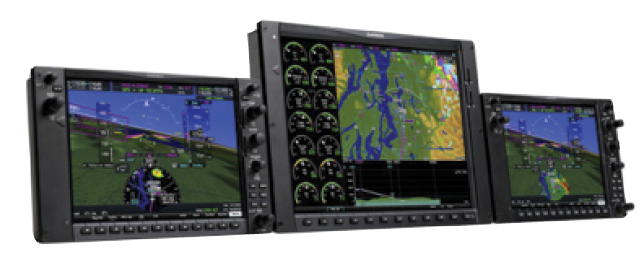Despite all the gloom and doom about piston-powered general aviation’s future you’ve probably heard lately around the FBO’s coffee pot, the industry actually isn’t doing too badly. Three data points that became available late in 2017 bear this out.
The first one is explored in greater depth in this month’s Quick Turns department, beginning on page 20: If the preliminary numbers hold up, general aviation’s fatal accident rate dropped below one in 100,000 flight hours for the first time in more than 50 years. That announcement came courtesy of the NTSB, which published its preliminary 2016 numbers in November 2017. The NTSB’s preliminary fatal accident rate for 2016 is 0.96 per 100,000 flight hours.

Much more analysis is necessary, of course—and the pessimist in me would like to see at least two such years back-to-back before popping the champagne corks—but I’ll take it. Hopefully, the forthcoming analysis will tell us what, if anything, we’re doing right when it comes to GA accident prevention: Is the recent focus on loss-of-control accidents bearing fruit? Is the widespread availability of in-cockpit weather having an impact? Have recent changes in medical certification had any impact at all? Or are these numbers an aberration, perhaps to be chalked up to esoteric economic factors or even a changing climate? It would be nice to have clear-cut answers to these and many other questions.
For the time being, though, everyone involved in GA accident prevention should take a victory lap. Then get right back to their valuable work.
A second data point comes from the General Aviation Manufacturers Association, GAMA, which announced the industry’s third-quarter 2017 sales numbers in November. While overall sales of all new aircraft types remain relatively flat when compared to the same period in 2016, and billings were down slightly, shipments of piston-powered airplanes are on a pace to be four percent greater than last year. Not exactly the late 1970s, when the industry was cranking out more than new 15,000 airplanes of all shapes and sizes each year, but it’s much better than some of the alternatives.
“The third quarter shipment and billing numbers continue a similar pattern for the industry this year: mixed, with some bright spots that continue trending upward, particularly in the rotorcraft market,” said GAMA President and CEO Pete Bunce when his organization published its results.
The not-so-good news in GAMA’s third-quarter numbers included a slight drop in turboprop airplane sales, which were down 2.1 percent, and an overall decline in new airplane billings of 2.8 percent.
The helicopter segment appears it will wind up being a very bright spot for the industry in 2017, with both piston-powered and turbine rotorcraft posting gains. According to GAMA’s numbers, piston-powered rotorcraft shipments were up a whopping 13.1 percent over 2016, while turbine helicopters were up “only” 5.6 percent. Billings were up, too. Overall, rotorcraft shipments in 2017 are on track to post gains exceeding seven percent over 2016.
Of course, it remains to be seen where the new piston-powered airplanes will be going and how they’ll be used. But rising tides lift all boats and if those successes can be maintained, we’ll hopefully see the effects in segments like training, fuel sales and avionics.
Which brings me to the third bit of good news in late 2017, courtesy of the Aircraft Electronics Association, AEA. Also in November, the association released its third-quarter Avionics Market Report, which showed a 4.1 percent increase in avionics sales over the same period in 2016. That’s a mixed number, however, since AEA’s data show a disappointing 17.1-percent reduction in sales of forward-fit avionics, that equipment installed by airframe manufacturers during original production. The good news is in the retrofit market—avionics equipment installed after an aircraft’s original production—where sales were up a whopping 28.3 percent over the third-quarter numbers in 2016. According to AEA, retrofit avionics sales during the first nine months of 2017 accounted for 57.7 percent of the total while forward-fit sales amounted to 42.3 percent.

The explanation? The looming January 2020 deadline for U.S. operators to carry ADS-B Out equipment. “The third-quarter report indicates that the retrofit market appears to be thriving, as those sales have increased more than 28 percent in the past year,” said AEA President Paula Derks. “To further that point, retrofit sales increased more than 32 percent during the third-quarter months alone. This is consistent with what shop owners in the United States have been telling me during our AEA Connect Conferences this fall, as many have a backlog of work ranging anywhere from two to six months. I am hopeful that the retrofit market will remain healthy as we get closer and closer to the Jan. 1, 2020, deadline for aircraft to be equipped with ADS-B Out avionics in the U.S.”
As Yogi Berra famously said, “It’s tough to make predictions, especially about the future.” With that in mind, your guess as to whether these successes will continue to be realized is as good as mine—perhaps better. For now, however, the news is pretty good across the board. For operators, the challenge will be to maintain and even improve upon our efforts to fly safely. We’ll never eliminate all GA accidents, but we can work hard at eliminating the ones we cause, which should be our goal.



